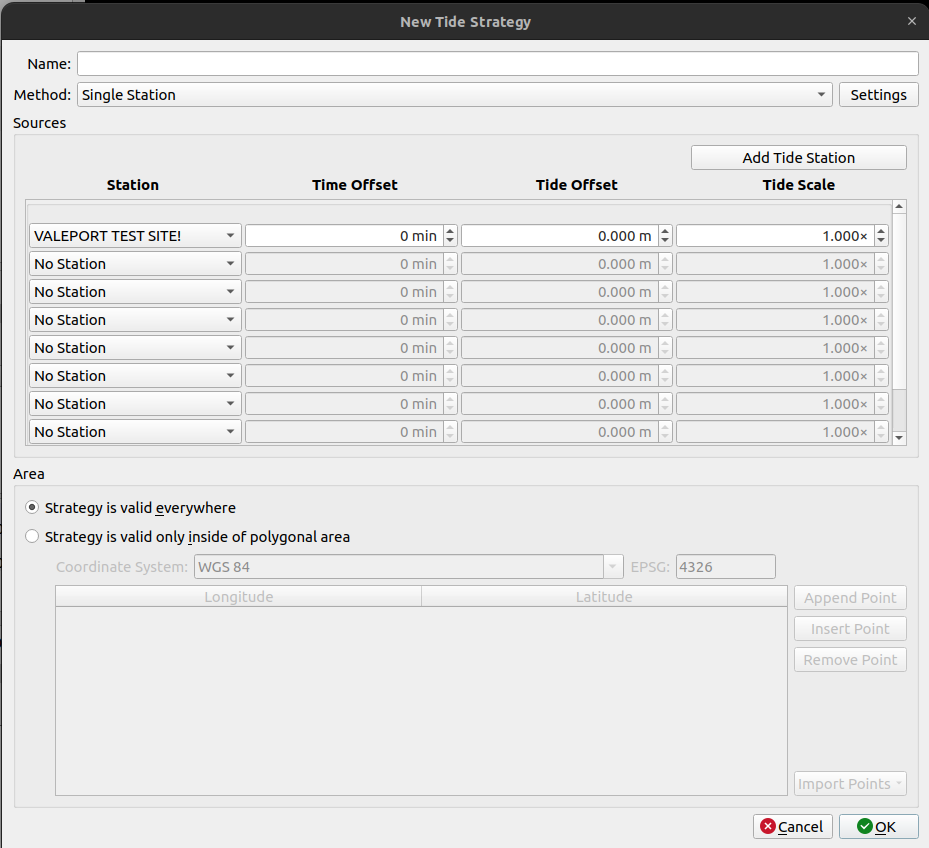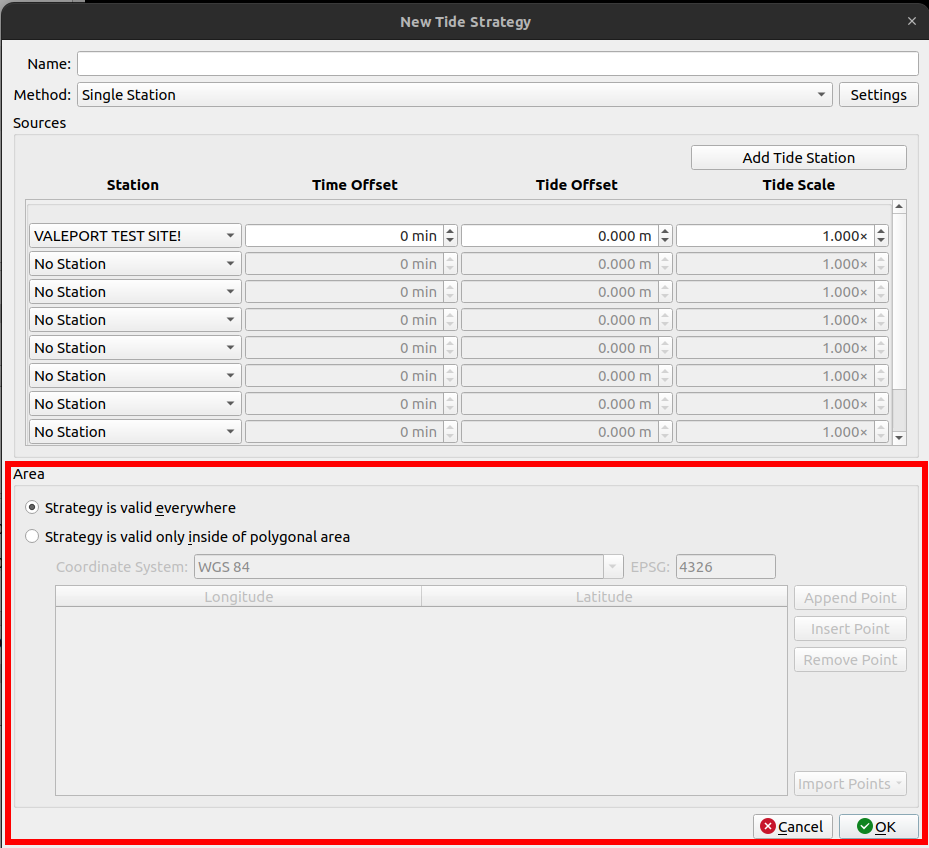How-to Tide Strategy
This how-to documentation will help users to implement a Tide strategy. A Tide Strategy can be used as a tide source for vertical referencing.
These steps assume that you have a Qimera working project open with data files loaded.
On this page:
Before you start, create a Dynamic Surface and a Static Surface, you will use the last one to review on the last step.
Step 1 - Import the tide files
Import your tide files, go to the Source Menu and select: 'Add tide files'. Navigate to the Tide file. For each file you will add a station.
Note that you will not add the tide files in batch, to add files in batch the files need to belong to the same station.
For detail information about import of Tide files, please see How-to Apply Tides
In this example, there are 3 tide files imported:
Project Source Files Window with tide files already imported and Raw sonar files marked dirty
Step 2 - Create Tide Strategy
Right-click Tides or Strategy on the Project Sources Window, and select 'Create Tide Strategy'.

Tide Strategy dialog
To add more Tide-Stations, click the 
Select a name, for display purposes and also select the method. When selecting the method, Qimera will populate the sources options for your strategy method. You can find more information about the Methods in Qimera Tide Strategy Dialog. You are also able to adjust your sources and set the area. You could set the strategy valid for a limited area of the survey.

Tide Strategy dialog - Area
Step 3 - Apply Tide Strategy
On the project sources window, right-click on Raw Sonar files, selecting all data files, and go to the Processing Parameters to the Vertical Reference tab. On the Vertical referencing tab, ensure Tide is selected and Strategy is set as the top priority.
Processing Parameter dialog Vertical Referencing Tab
You should now reprocess, click the Auto Process icon
Step 4 - Review Tides in Times series and Time Series Multiplot
You can review your tide files and tide strategy. Select a raw sonar file, and hover to the Time Series Editor window, and select Tide and one of the Stations.
Time Series Editor window with tide station selected
You are able to see all three tides values for the Time Series of that particular file. Depending on the interpolation and methods used the Strategy should be a sensible value between the tides used.
Time Series Editor window with another tide station selected
To review the outcome value of the Tide Strategy, select the Time Series Multiplot and configure it to load the Ping Tide. The tide strategy is area dependent, so the value will be interpolated between the 3 stations. See the How-to Time Series Multiplot for steps on how to configure the Multiplot to show the Ping Tide.
In this case, the values of the Tide Strategy are close to the Stornoway tide station values. You have now successfully applied a Tide Strategy.
Step 5 - Review Tides comparing Static Surfaces
Create a new static Surface. You will now be able to compare both surfaces. In this case a surface difference.
Related articles
New Features for Managing and Applying Tides in Qimera
How-to Custom ASCII File Import
